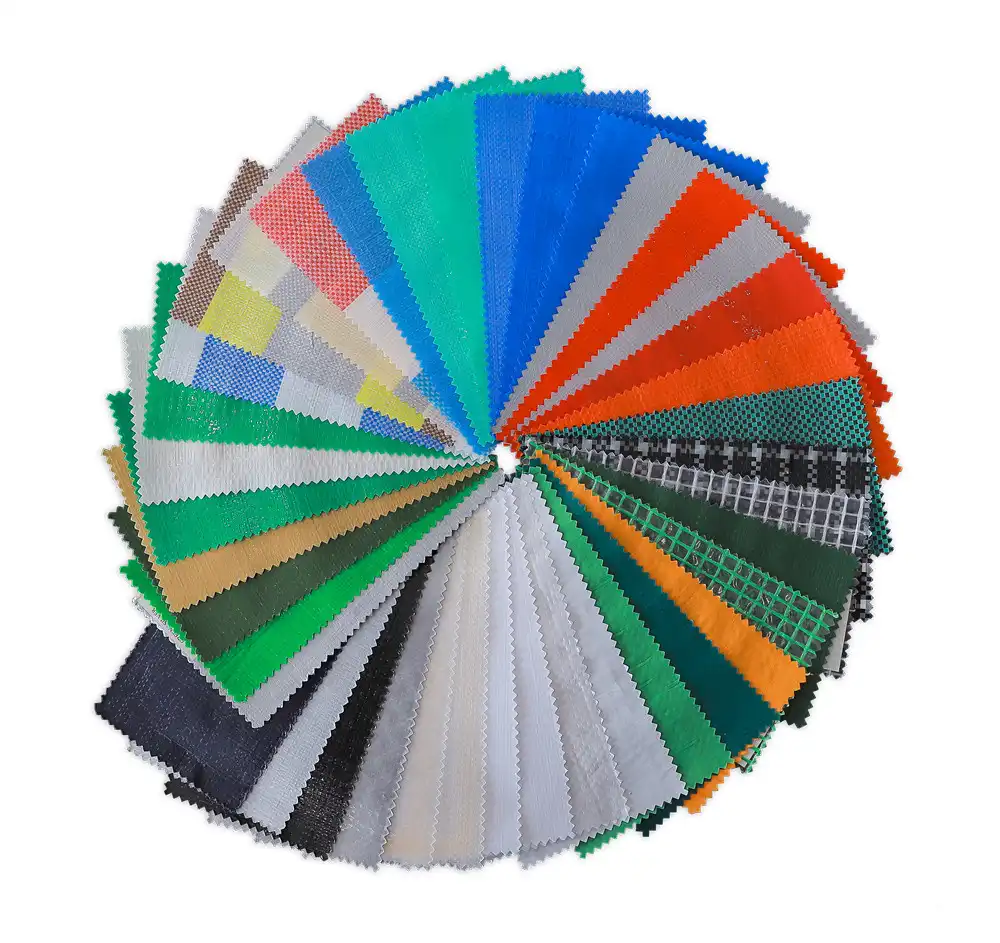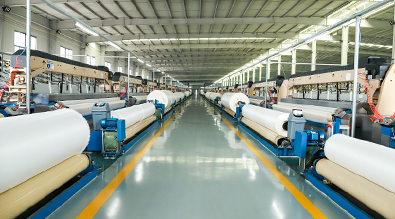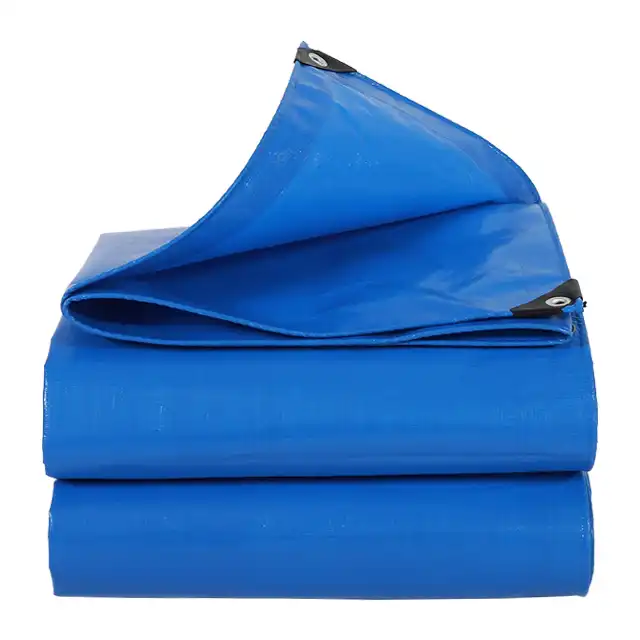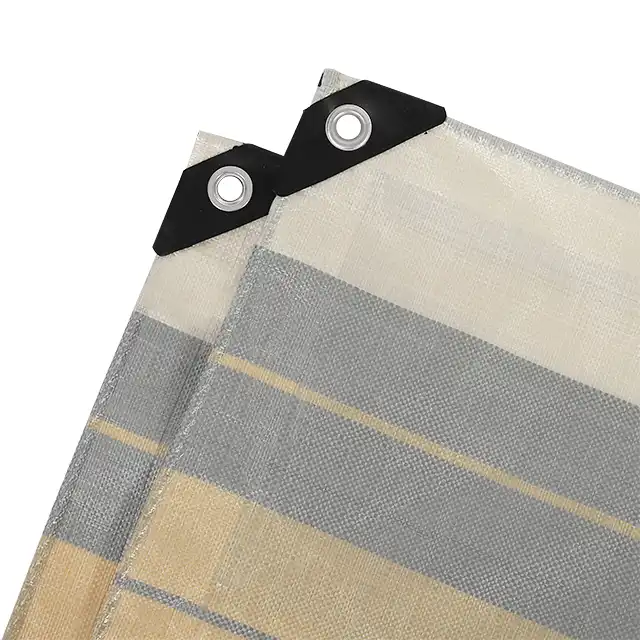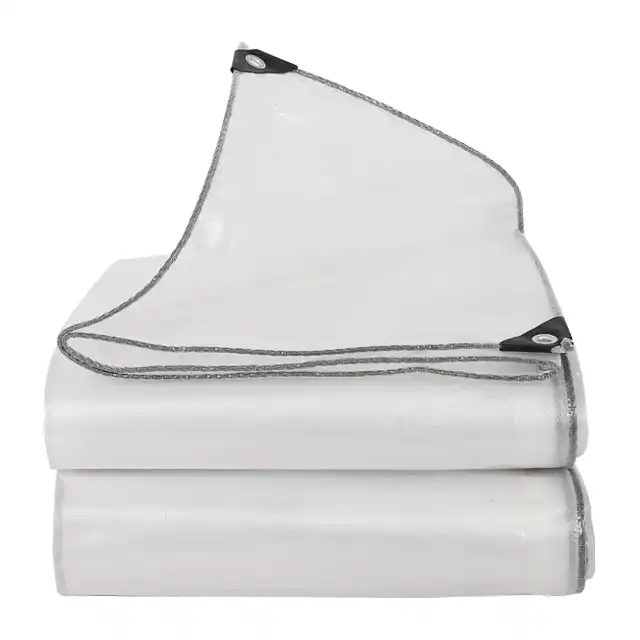How to Repair Your Tarpaulin for Long-Term Use?
Picture this: you're halfway through a critical construction project when sudden weather strikes, and you discover your trusted tarpaulin has developed tears that compromise its protective capabilities. Every professional who relies on tarpaulin coverage has faced this frustrating scenario. Whether you're protecting valuable equipment, covering materials on a job site, or safeguarding agricultural products, a damaged tarpaulin can quickly turn from your greatest asset into your biggest liability. Understanding proper tarpaulin repair techniques isn't just about saving money—it's about ensuring continuous protection when you need it most, extending the service life of your investment, and maintaining the reliability that keeps your operations running smoothly.
Essential Tarpaulin Repair Fundamentals
-
Understanding Tarpaulin Damage Types
 Effective tarpaulin repair begins with accurately assessing the type and extent of damage you're dealing with. Different damage patterns require specific repair approaches to ensure long-lasting results. Minor punctures from sharp objects create clean holes that are relatively straightforward to patch, while tears from excessive wind or stress create irregular edges that demand more comprehensive repair strategies.The material composition of your tarpaulin significantly influences the repair method selection. High-density polyethylene (HDPE) woven fabric with LDPE coating, like those manufactured by leading China tarpaulin suppliers, requires different repair techniques compared to canvas or vinyl alternatives. Understanding your tarpaulin's construction helps determine whether you need adhesive-based repairs, heat-welding techniques, or mechanical fastening methods. Weather exposure also affects repair complexity. UV-treated tarpaulins with superior sun protection maintain their structural integrity longer, but even the most durable materials eventually show wear patterns around stress points, grommets, and fold lines. Professional-grade tarpaulins with tear-resistant properties often develop predictable failure patterns that experienced users can anticipate and address proactively.
Effective tarpaulin repair begins with accurately assessing the type and extent of damage you're dealing with. Different damage patterns require specific repair approaches to ensure long-lasting results. Minor punctures from sharp objects create clean holes that are relatively straightforward to patch, while tears from excessive wind or stress create irregular edges that demand more comprehensive repair strategies.The material composition of your tarpaulin significantly influences the repair method selection. High-density polyethylene (HDPE) woven fabric with LDPE coating, like those manufactured by leading China tarpaulin suppliers, requires different repair techniques compared to canvas or vinyl alternatives. Understanding your tarpaulin's construction helps determine whether you need adhesive-based repairs, heat-welding techniques, or mechanical fastening methods. Weather exposure also affects repair complexity. UV-treated tarpaulins with superior sun protection maintain their structural integrity longer, but even the most durable materials eventually show wear patterns around stress points, grommets, and fold lines. Professional-grade tarpaulins with tear-resistant properties often develop predictable failure patterns that experienced users can anticipate and address proactively.
-
Identifying Repairable vs. Replacement Scenarios
Not every damaged tarpaulin deserves repair investment. Small tears under 6 inches in length, isolated puncture holes, and worn grommets typically represent cost-effective repair opportunities. However, extensive UV degradation, multiple large tears, or widespread seam failure often indicate that replacement provides better long-term value. Consider the tarpaulin's service history and remaining expected lifespan when making repair decisions. A relatively new, high-quality poly tarp from a reputable China tarpaulin manufacturer justifies comprehensive repair efforts, while an older tarpaulin showing multiple failure points might best serve as a temporary patch source for newer covers.
Professional Tarpaulin Repair Techniques
-
Small Tear and Puncture Repair Methods
Small tears and punctures represent the most common tarpaulin damage scenarios and fortunately offer the most straightforward repair solutions. For minor tears and holes, an easy sew might do the trick, particularly when dealing with canvas or heavy-duty woven materials that accept needle penetration without creating additional stress points. The patch-and-adhesive method provides superior results for polyethylene tarpaulins. Begin by cleaning the damaged area thoroughly, removing dirt, debris, and any loose material fragments. Cut a patch from similar material that extends at least 2 inches beyond the damage in all directions. Apply high-quality tarp cement or specialized adhesive designed for polyethylene bonding, ensuring complete coverage without creating thick buildup that might crack under stress. For waterproof applications, consider the double-patch technique where identical patches are applied to both sides of the damaged area. This creates a sandwich effect that not only repairs the structural damage but actually strengthens the tarpaulin beyond its original capacity. Professional tarpaulin repair often employs this method for critical applications where failure risks are unacceptable.
-
Advanced Seam and Edge Reinforcement
Seam failure represents one of the most challenging tarpaulin repair scenarios because it typically indicates stress levels exceeding the material's design capacity. Seams are often vulnerable areas that can start to fray or weaken over time. To reinforce weak seams, use a heavy-duty thread or tarp repair tape. Professional repair approaches involve both immediate damage correction and stress redistribution to prevent recurrence. Begin seam repairs by carefully removing loose threads and damaged material, creating clean edges that accept new joining methods. Heavy-duty polyester thread designed for outdoor applications provides the necessary strength and UV resistance for long-term durability. Double-stitching patterns distribute stress more effectively than single-line repairs, while bartack reinforcement at stress concentration points prevents tear propagation. Edge reinforcement becomes critical for tarpaulins subjected to high wind loads or frequent handling. Adding reinforcement strips along vulnerable edges, particularly around grommets and tie-down points, significantly extends service life. Quality China tarpaulin wholesale suppliers often incorporate these reinforcements during manufacturing, but field additions using compatible materials can achieve similar results.
Maintenance Strategies for Extended Tarpaulin Life
-
Preventive Care and Inspection Protocols
Systematic preventive maintenance dramatically extends tarpaulin service life while reducing emergency repair situations. Establish monthly inspection routines that examine stress points, seam integrity, and UV degradation patterns. Early detection of minor issues allows for simple repairs before they develop into major failures requiring extensive work or complete replacement. Focus inspection attention on high-stress areas including corners, grommet attachments, and fold lines where the tarpaulin experiences repeated flexing. Look for discoloration patterns that indicate UV degradation, as these areas become increasingly brittle and prone to tearing. Document inspection findings to track degradation patterns and predict future maintenance needs. Proper storage significantly impacts tarpaulin longevity. Clean, dry storage away from direct sunlight prevents premature aging and material degradation. Avoid folding tarpaulins along the same lines repeatedly, as this creates permanent stress concentrations that eventually fail. Rolling large tarpaulins rather than folding them distributes stress more evenly and prevents crease-related failures.
-
Cleaning and Treatment Protocols
Regular cleaning removes contaminants that accelerate material degradation and compromise repair adhesion. Use mild detergent solutions and soft brushes to remove accumulated dirt, salt deposits, and organic growth without damaging the surface coating. Avoid harsh chemicals or abrasive cleaning methods that can compromise the tarpaulin's waterproof treatment or UV protection. After cleaning, allow complete drying before storage or reuse. Trapped moisture between layers promotes mold growth and accelerates material breakdown, particularly in natural fiber components. For tarpaulins used in marine or high-humidity environments, consider anti-fungal treatments specifically designed for outdoor fabrics. Periodic retreatment with UV protectants can extend service life in high-exposure applications. Quality tarpaulins from established China tarpaulin factories incorporate UV stabilizers during manufacturing, but these treatments gradually degrade through exposure and cleaning cycles. Supplemental UV protection products can restore some protective capability, though they cannot match the effectiveness of integrated protection systems.
Cost-Effective Repair Solutions and Tools
-
Essential Repair Kit Components
Building a comprehensive tarpaulin repair kit ensures you're prepared for common damage scenarios without requiring emergency supply runs. Include various patch materials compatible with your tarpaulin types, ranging from temporary duct tape solutions to permanent adhesive patches designed for long-term outdoor exposure. Quality adhesives specifically formulated for polyethylene bonding provide superior results compared to general-purpose products. These specialized adhesives maintain flexibility through temperature variations while creating waterproof seals that resist peeling and cracking. Include both contact cement for large patch applications and flexible sealants for seam repairs. Heavy-duty threads, needles capable of penetrating coated fabrics, and basic sewing tools enable field repairs when adhesive methods aren't practical. You may need a canvas tarp repair kit. This kit includes a piece of canvas that's glued securely over a hole or uneven tear using an all-purpose tarp cement. Professional repair kits often include specialized tools like fabric punches for creating clean holes and grommet installation tools for comprehensive repairs.
-
Budget-Friendly Professional Techniques
Professional repair techniques don't always require expensive equipment or materials. Simple heat-welding using household irons can create strong, waterproof seams in thermoplastic tarpaulins when proper techniques are employed. Use parchment paper as a release barrier and maintain consistent temperature and pressure for optimal results. Mechanical fastening systems provide reliable alternatives to adhesive repairs in applications where removability or extreme durability is required. Snap fasteners, heavy-duty zippers, and reinforced button systems allow for field repairs that can be easily modified or upgraded as conditions change. Consider the economics of repair versus replacement carefully. While extensive repairs might cost significantly less than new tarpaulin purchases, factor in the time investment and reliability requirements. For critical applications where failure creates significant consequences, investing in high-quality replacement tarpaulins from reputable sources often provides better long-term value.
Conclusion
Effective tarpaulin repair requires understanding damage types, selecting appropriate techniques, and implementing preventive maintenance strategies. Professional repair methods, combined with quality materials and proper tools, can significantly extend service life while maintaining reliable protection. Investment in repair skills and equipment pays dividends through reduced replacement costs and improved operational reliability.
Cooperate with Linyi Shengde Plastic Co., Ltd.
When repair efforts reach their limits, partnering with a trusted China tarpaulin manufacturer ensures access to high-quality replacement products designed for long-term durability. Linyi Shengde Plastic Co., Ltd. stands as the leading enterprise in the Chinese PE tarpaulin field, established in 2003 with over two decades of manufacturing expertise and a registered capital of CNY 80 Million.
Our comprehensive manufacturing capabilities include 30+ high-tech extruding machines producing yarn thickness from 400D to 2500D, over 400 Korea-imported automatic water-jet looms creating fabric widths from 1.5m to 5m without joints, and 7 production lines ensuring 100+ tons daily output. This advanced infrastructure, operated by over 1000 well-trained workers, guarantees consistent quality and reliable delivery schedules for demanding applications.
Quality management remains our cornerstone strength. ISO 9001:2015 certification validates our systematic approach to quality control, while advanced testing equipment and comprehensive monitoring systems ensure every process meets stringent standards. Our partnerships with UNHCR, IOM, ICRC, and UNICEF demonstrate the reliability and performance standards that international organizations demand from their tarpaulin suppliers.
Innovation drives our product development initiatives. Recent breakthroughs include ultra-wide width braiding machine development, 4-meter width tarpaulin products, enhanced fire prevention functions, and superior waterproof capabilities. These research and development achievements, combined with our custom manufacturing capabilities, ensure we can meet specific requirements for specialized applications.
As your preferred China tarpaulin supplier, China tarpaulin wholesale partner, and China tarpaulin factory, we offer comprehensive solutions from standard products to custom specifications. Our tarpaulin for sale includes weights from 65gsm to 280gsm, multiple colors, and sizes upon request, all available at competitive tarpaulin price points without compromising our commitment to High Quality tarpaulin manufacturing standards.
Contact us at info@shengdetarp.com to discuss your requirements and experience the Shengde difference in professional tarpaulin solutions. Bookmark this page for future reference when repair challenges require expert guidance and quality materials.
FAQ
Q: What's the most effective repair method for small puncture holes in PE tarpaulins?
A: Use patch repair with specialized polyethylene adhesive, applying patches to both sides for waterproof applications and allowing 24-48 hours cure time.
Q: How can I determine if a damaged tarpaulin is worth repairing versus replacing?
A: Consider repair for single tears under 6 inches, isolated damage, or newer tarpaulins; replace when multiple large tears, extensive UV damage, or widespread seam failure is present.
Q: What preventive maintenance extends tarpaulin service life most effectively?
A: Regular monthly inspections, proper cleaning with mild detergents, appropriate storage away from UV exposure, and prompt repair of minor damage before it spreads.
Q: Can I repair tarpaulin seam failures permanently using field methods?
A: Yes, using heavy-duty outdoor thread with double-stitching patterns and seam reinforcement tape, though professional heat-welding provides superior long-term durability for critical applications.
References
1. "Textile Repair and Maintenance for Outdoor Applications" - Johnson, M.R. & Smith, A.K., Industrial Fabrics Association International
2. "Polyethylene Film and Fabric Durability Studies" - Chen, L.W., Zhang, H.M., & Liu, Q.S., Materials Science Research Institute
3. "Preventive Maintenance Strategies for Protective Covering Systems" - Anderson, P.J. & Williams, R.T., Construction Equipment Management Journal
4. "Adhesive Bonding Techniques for Thermoplastic Materials" - Rodriguez, C.A., Thompson, D.L., & Kumar, S.N., Applied Materials Engineering Quarterly
